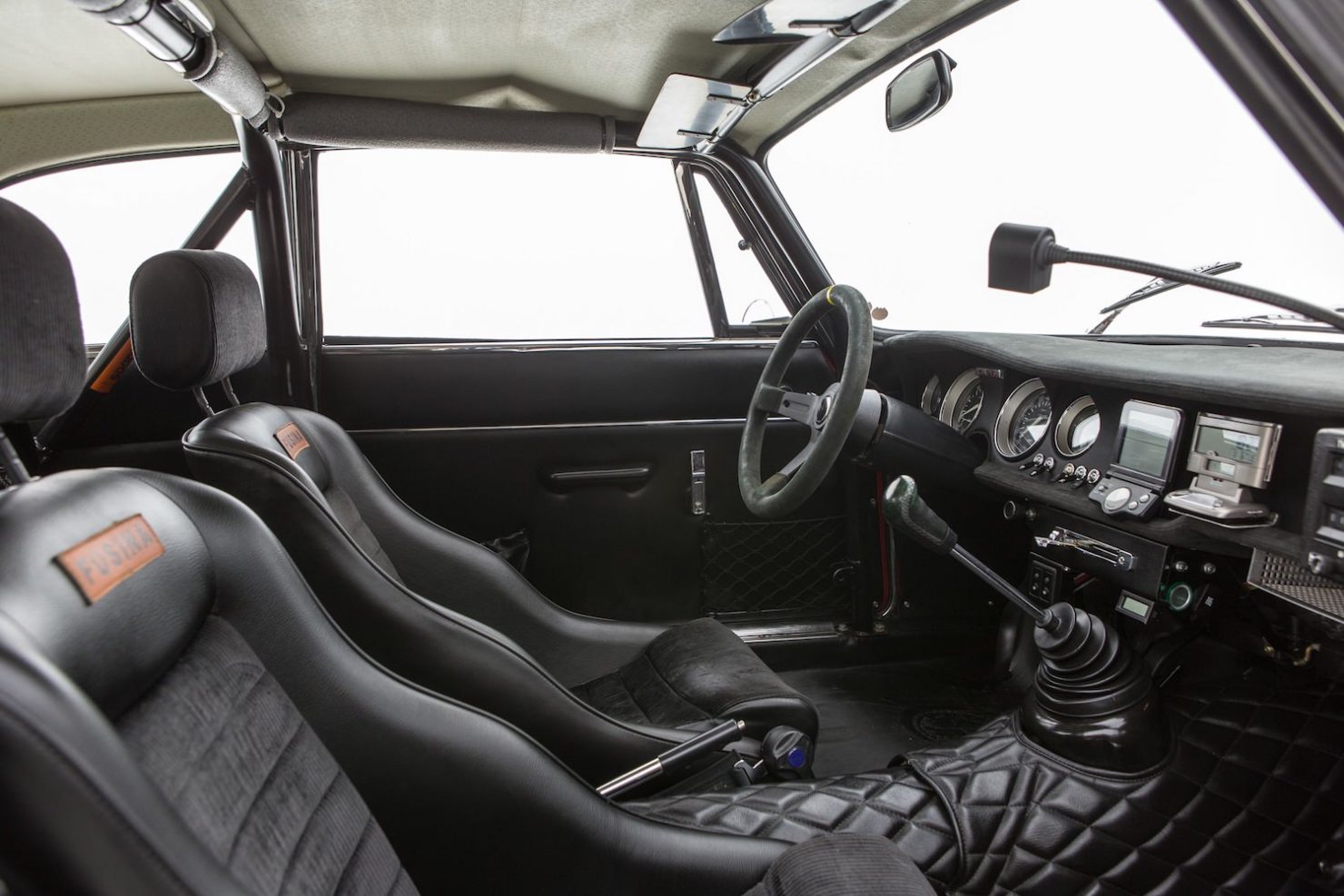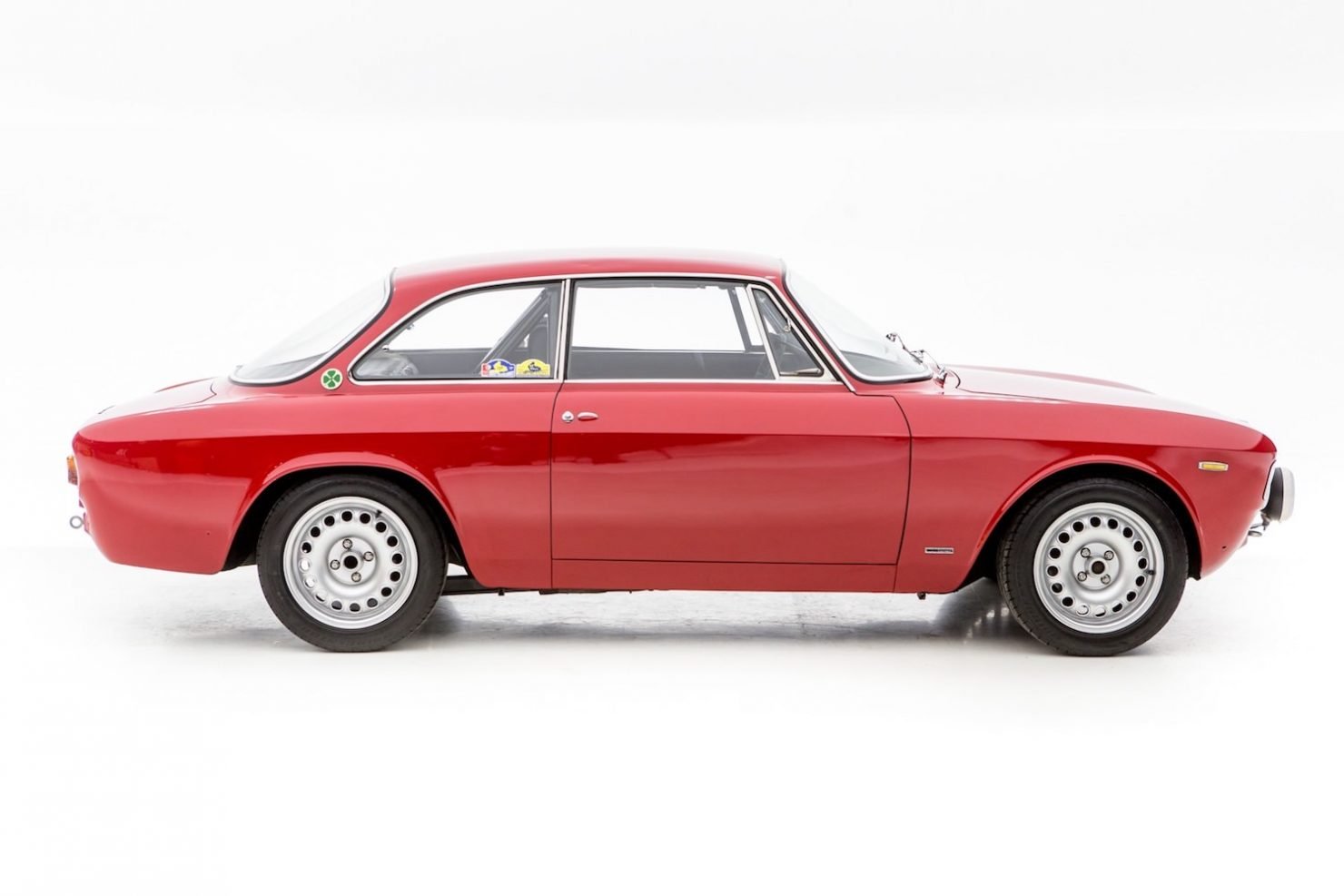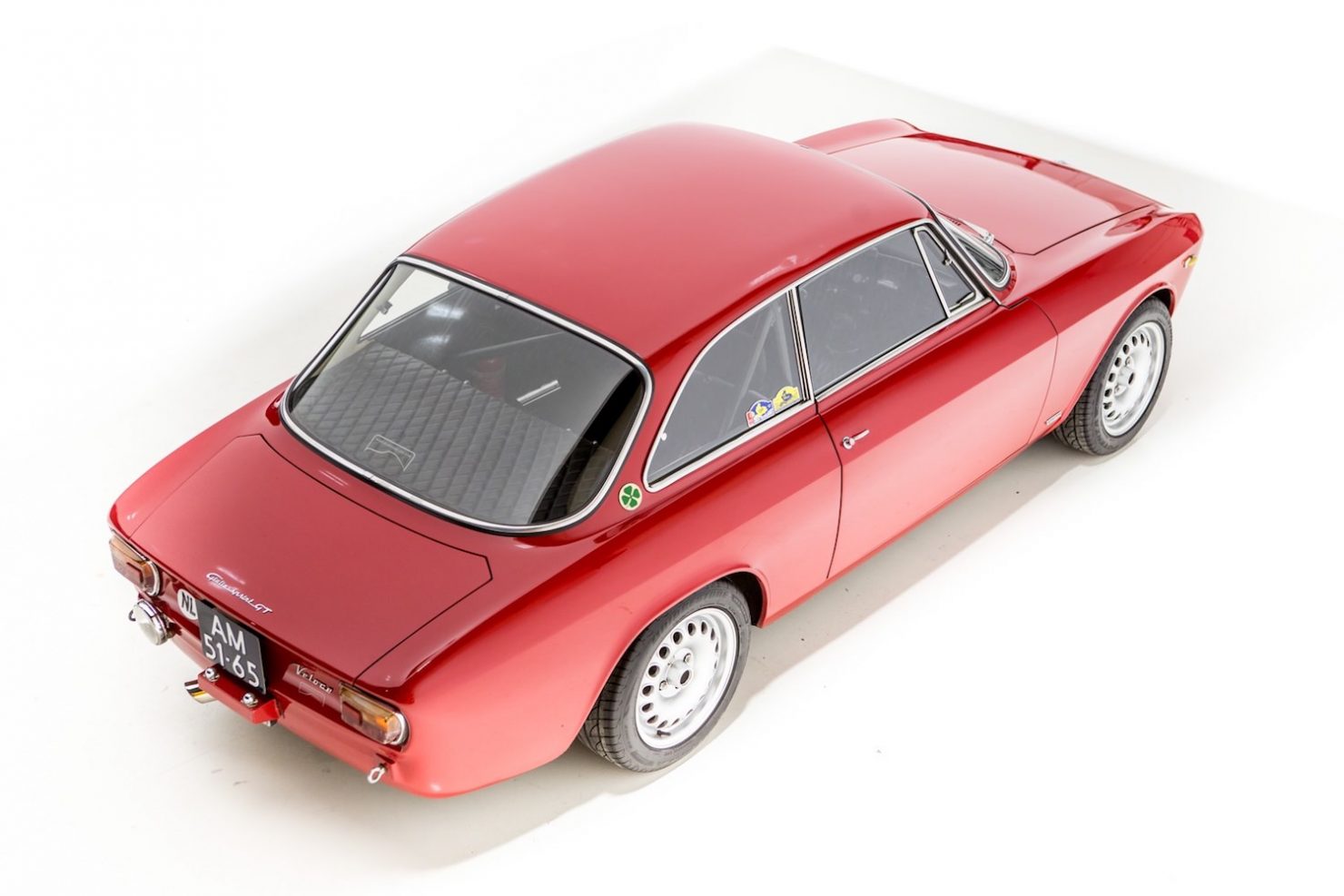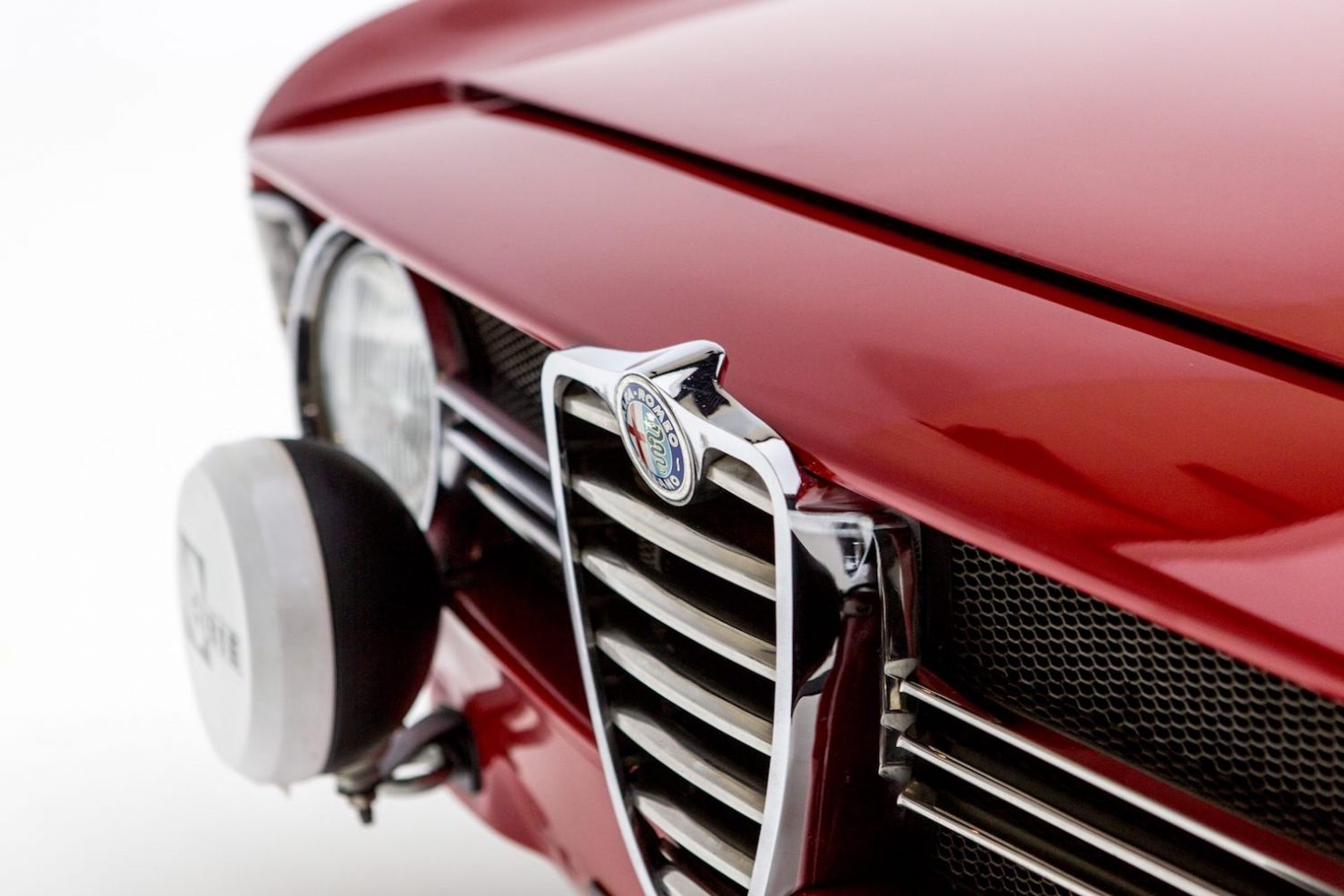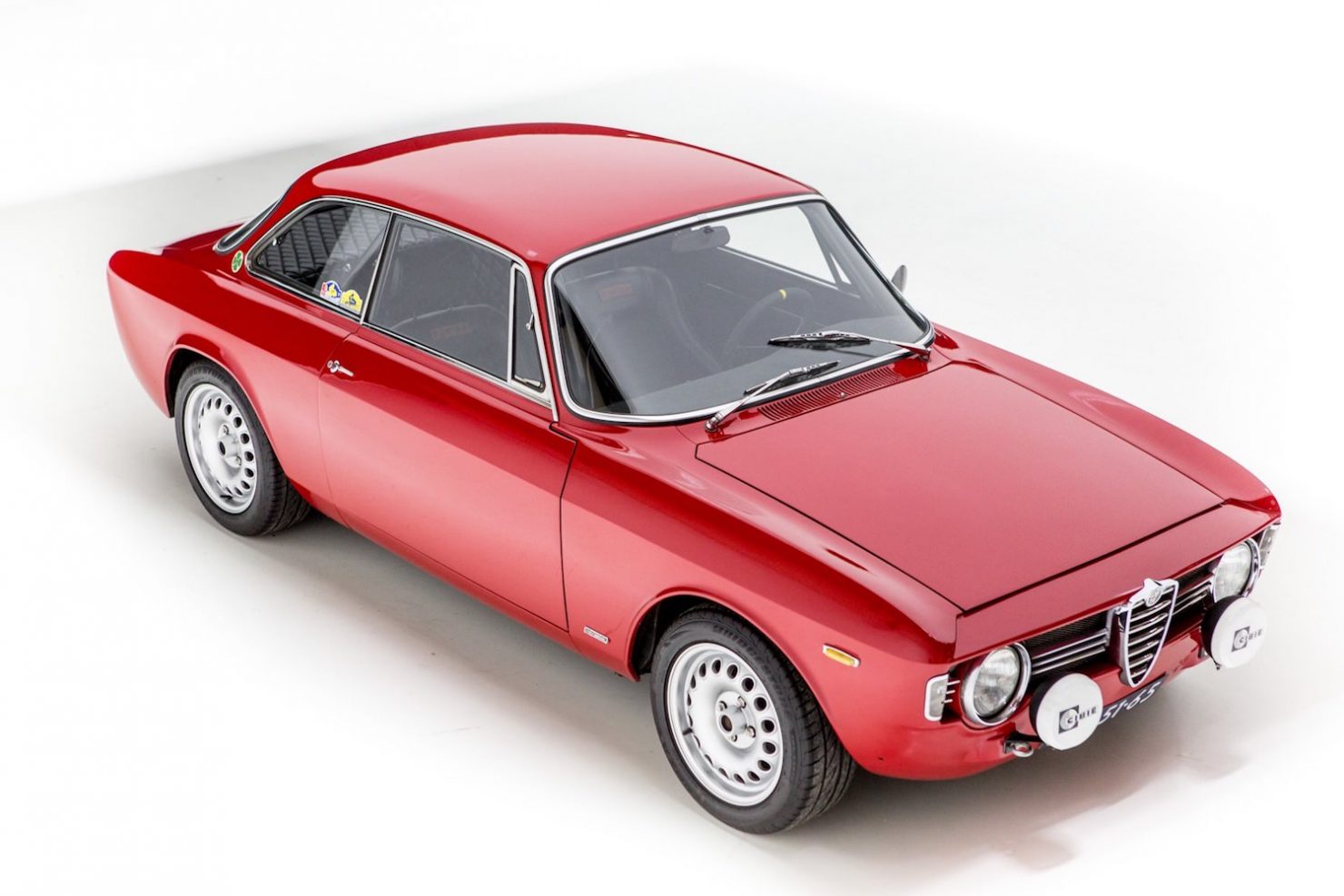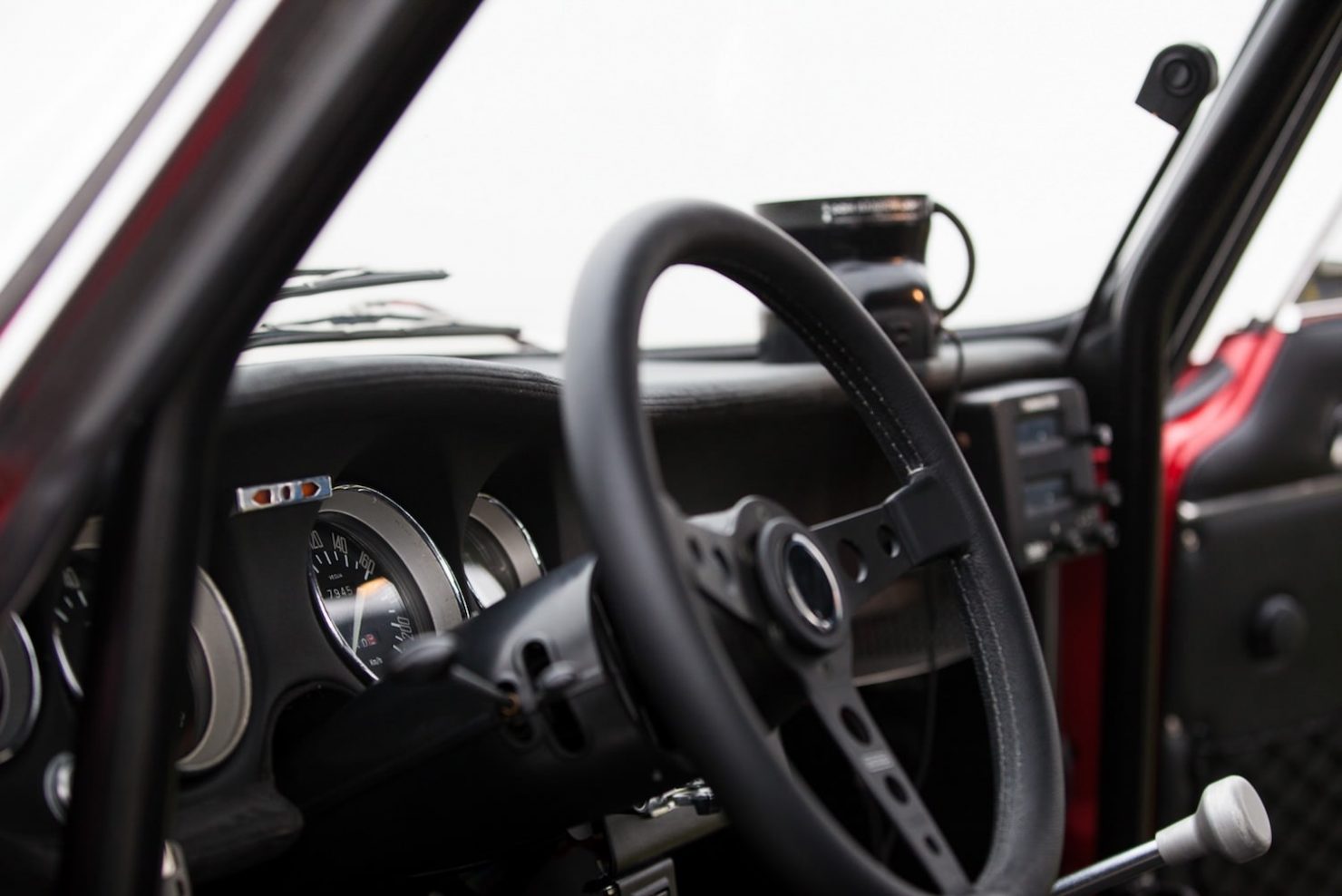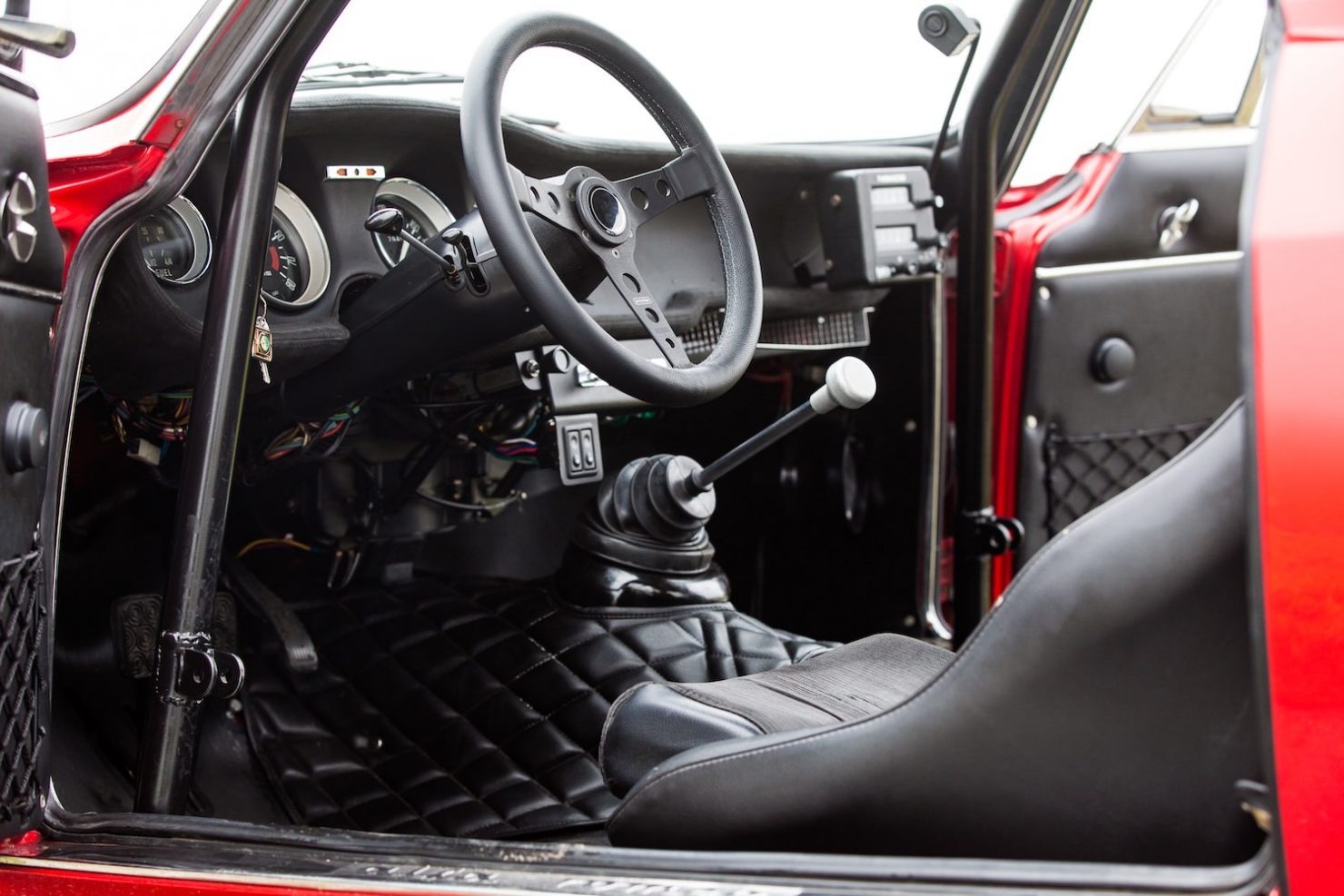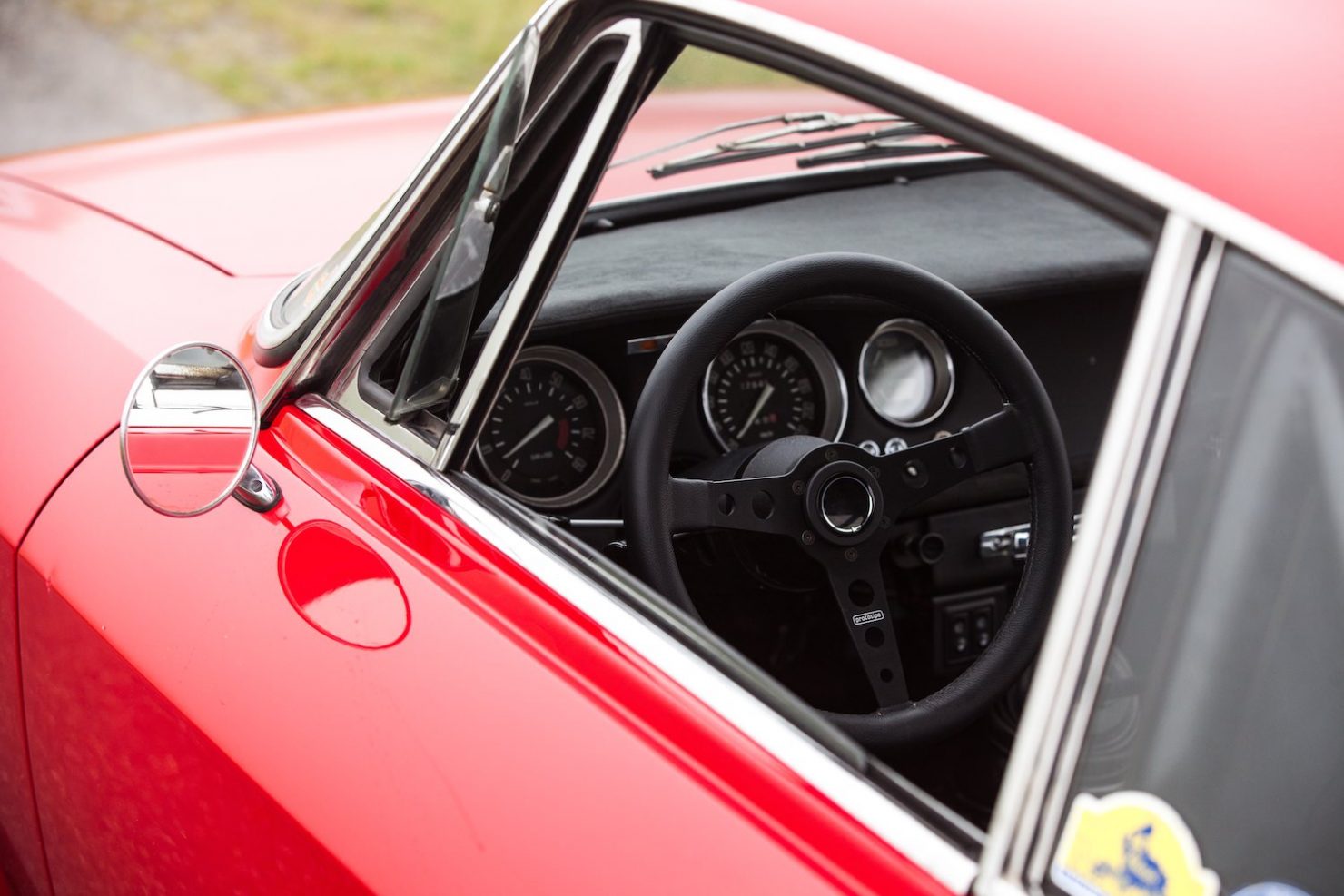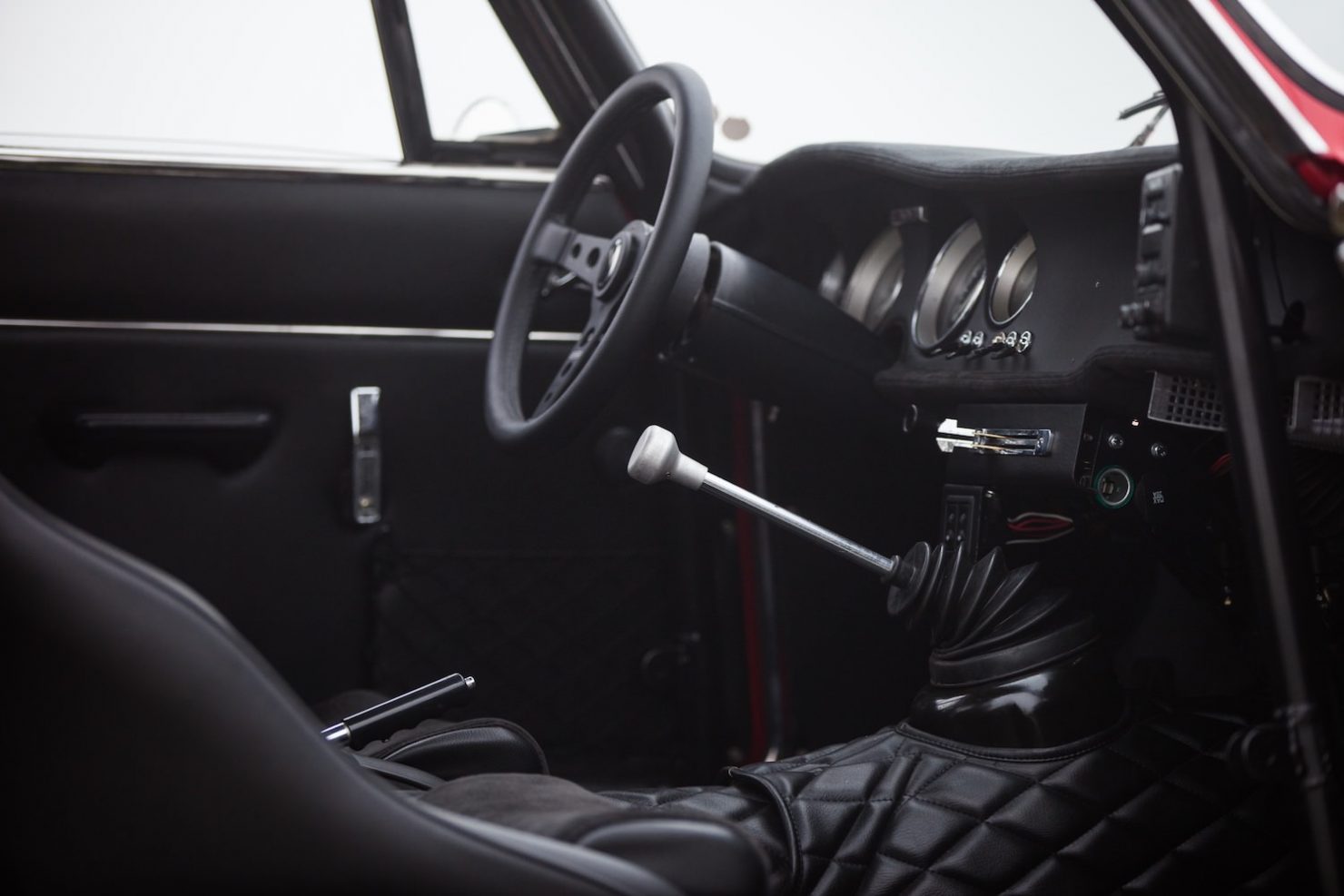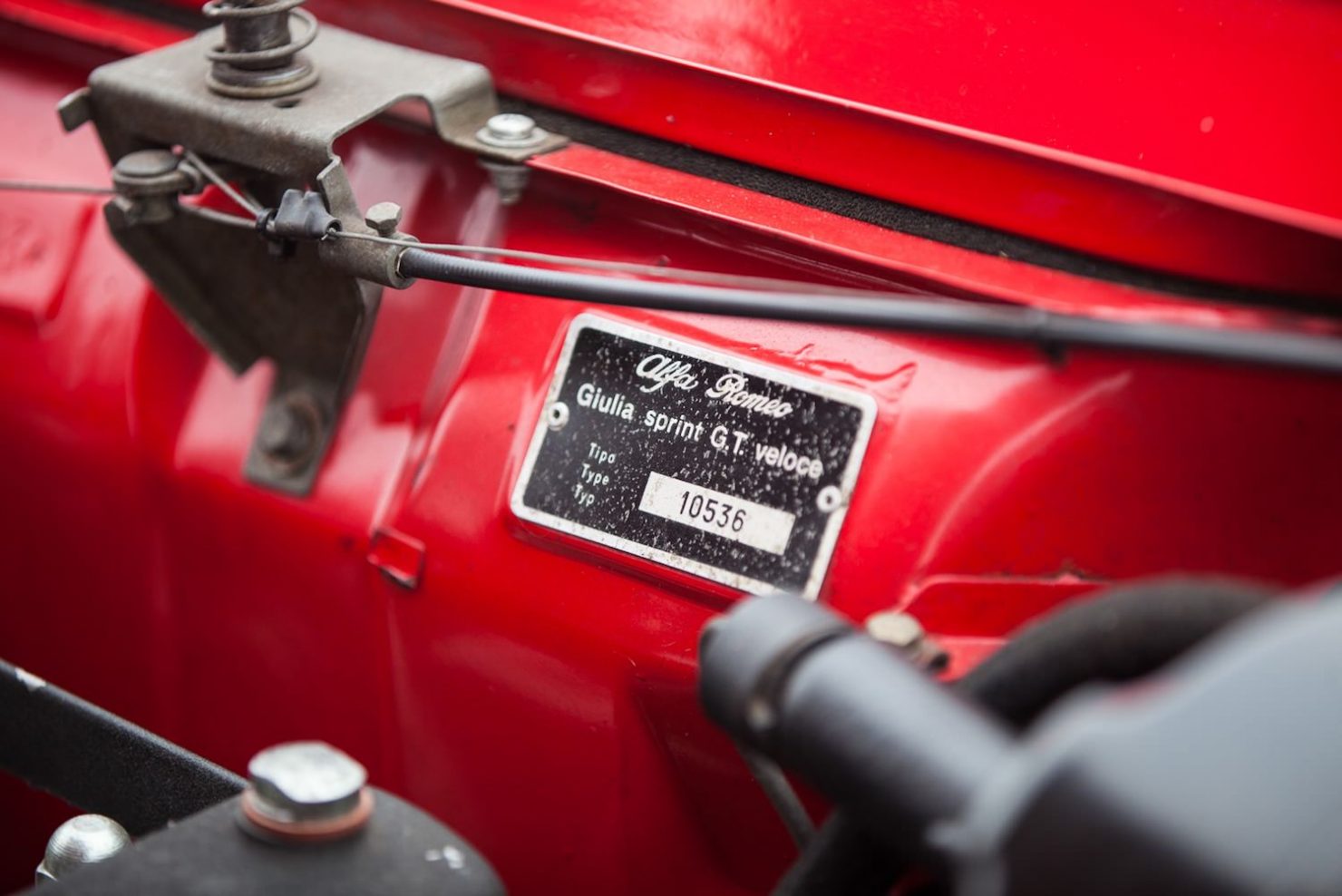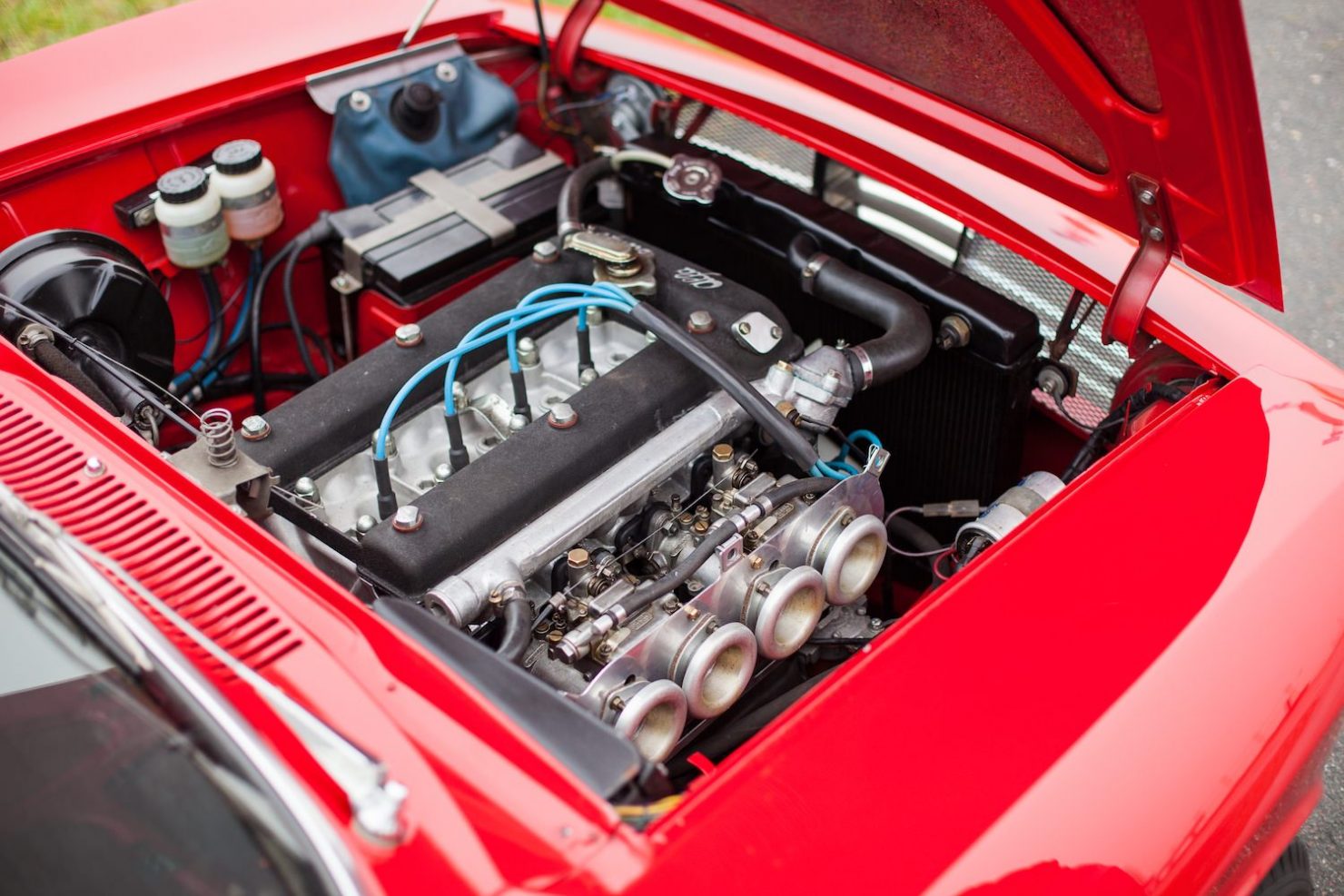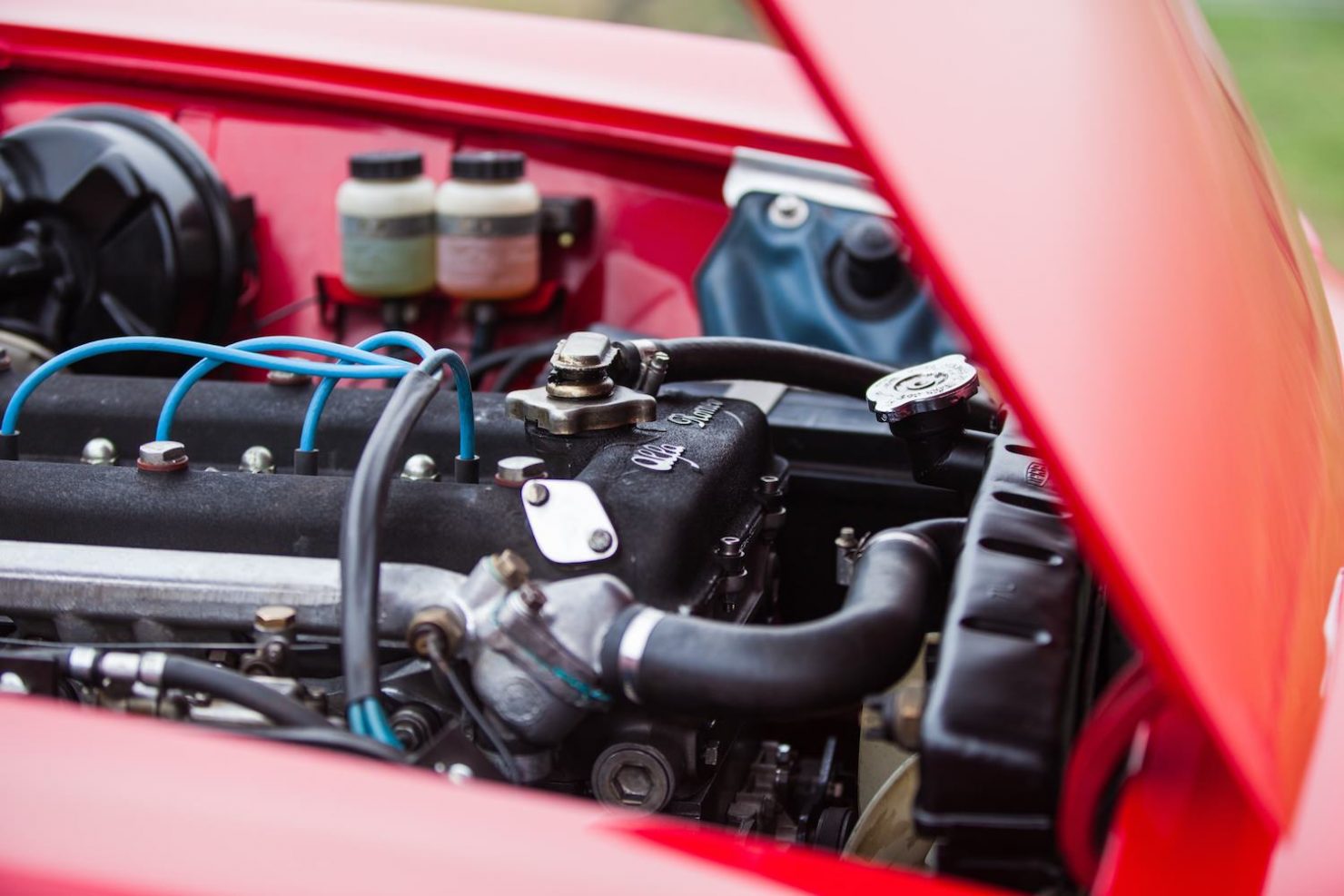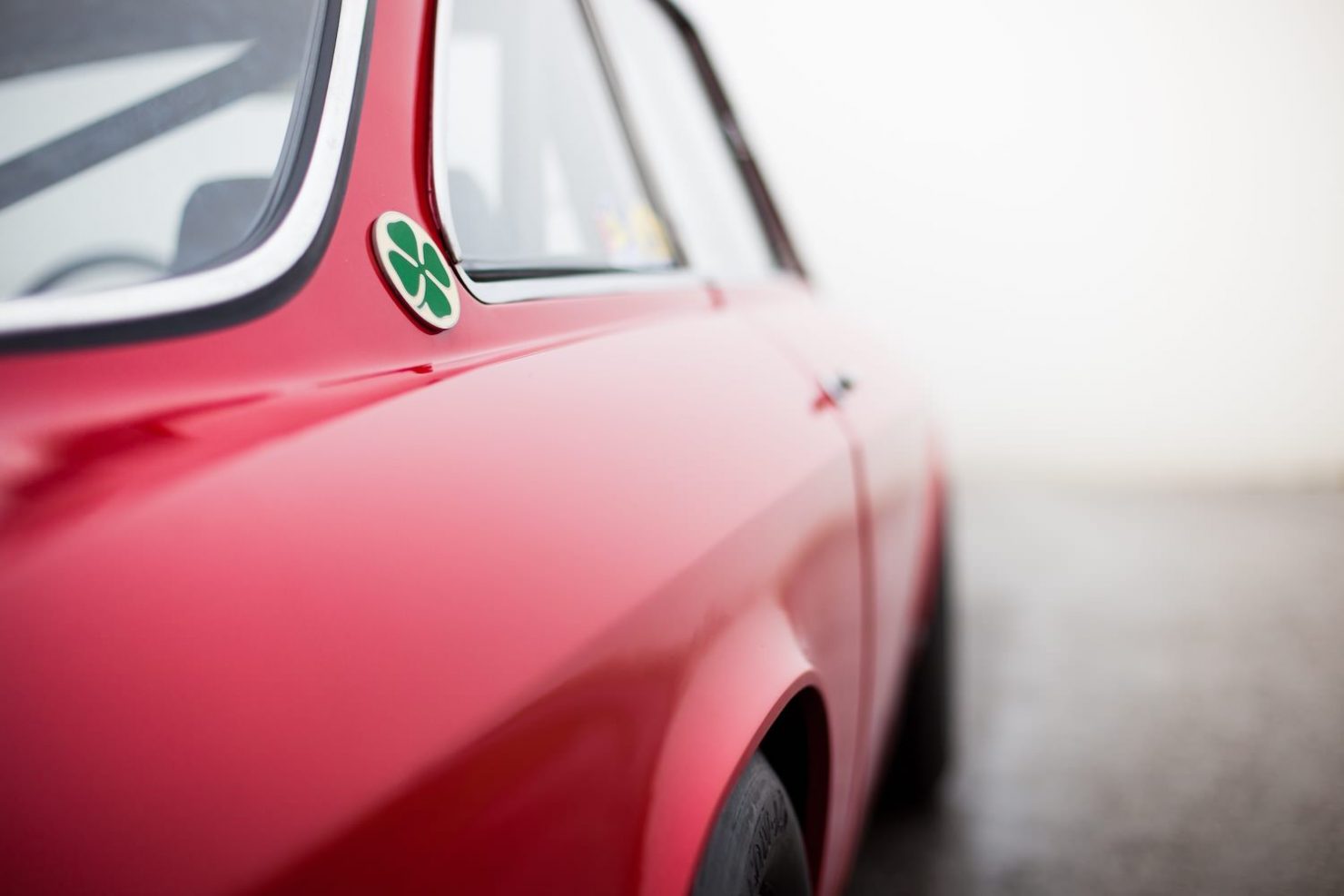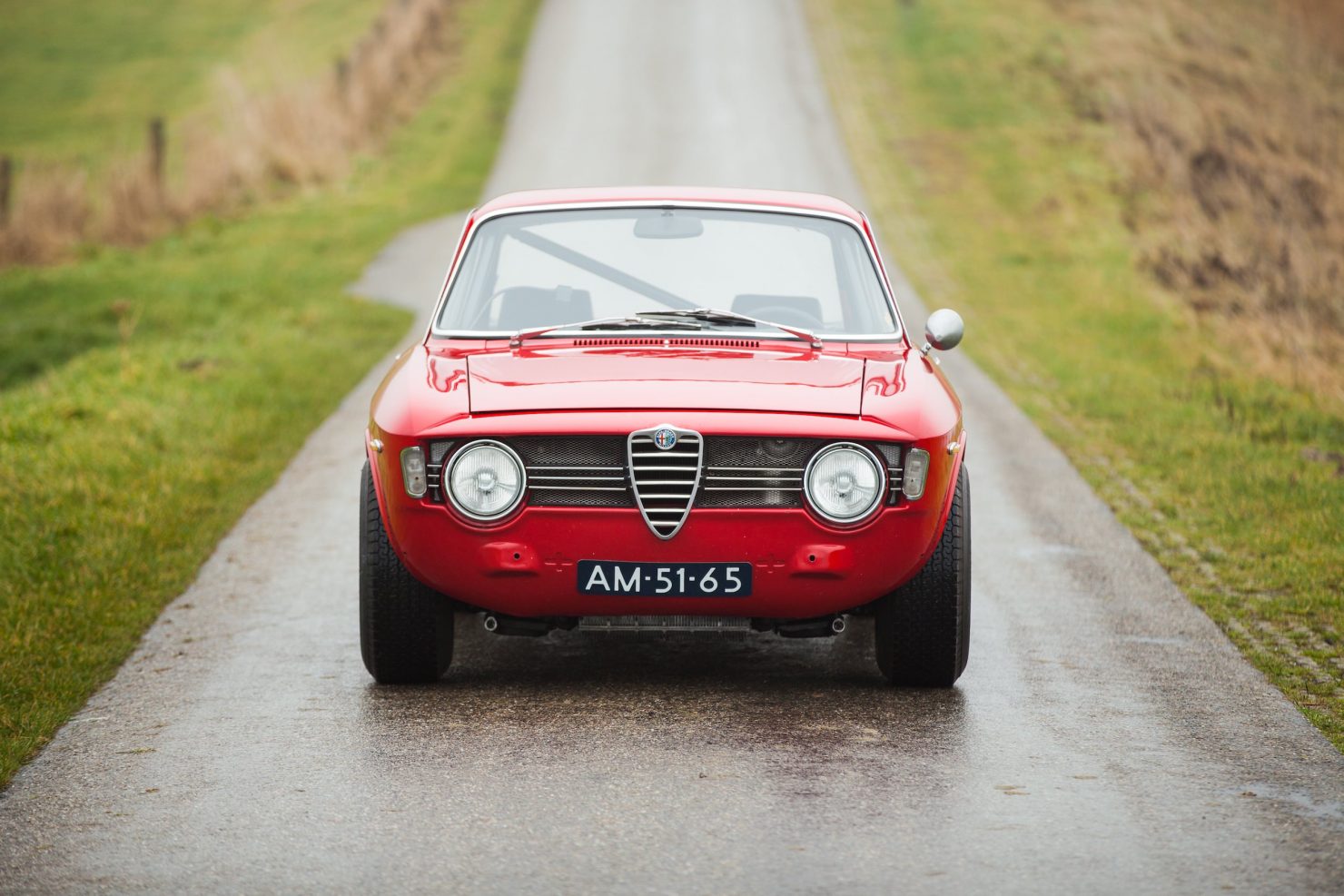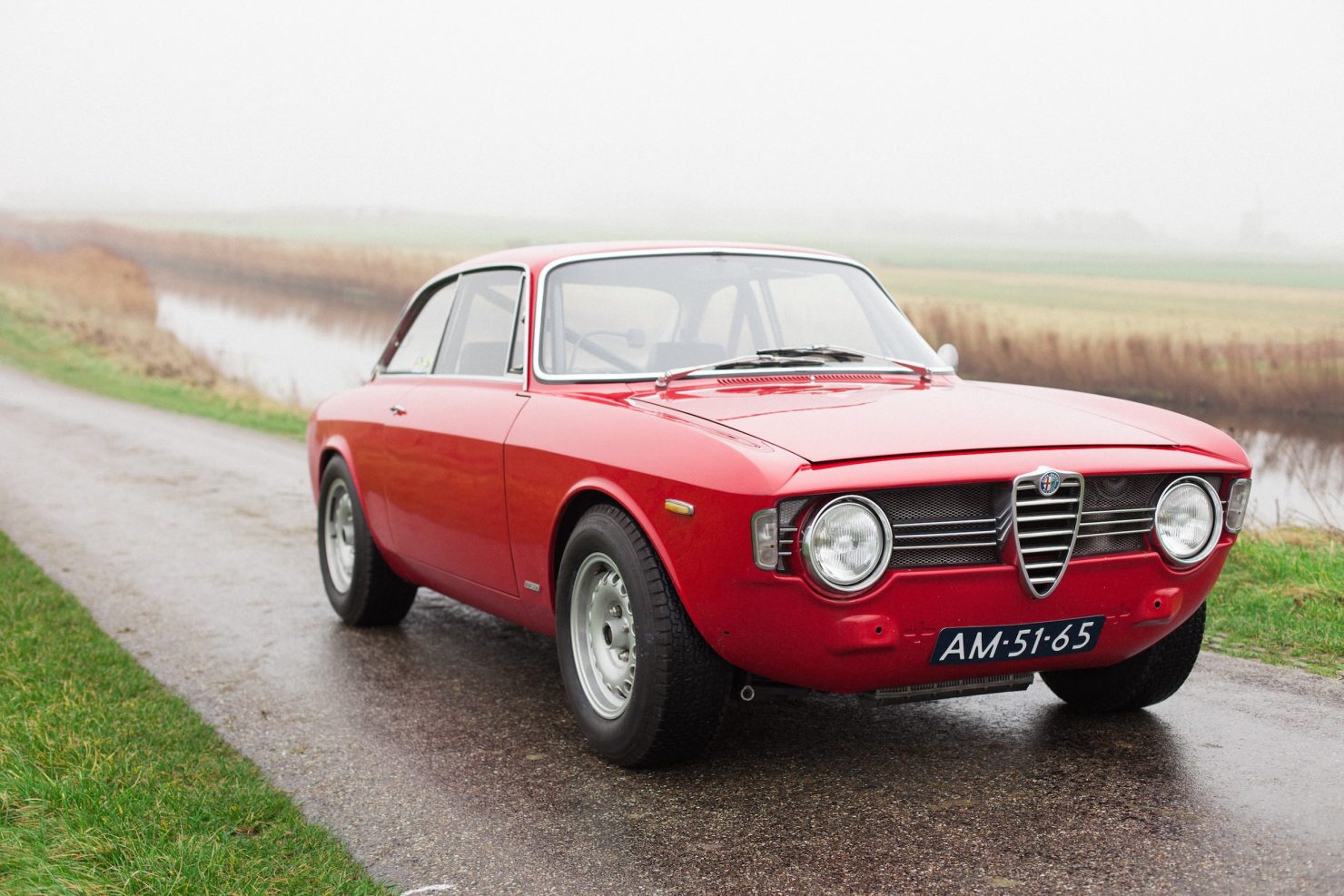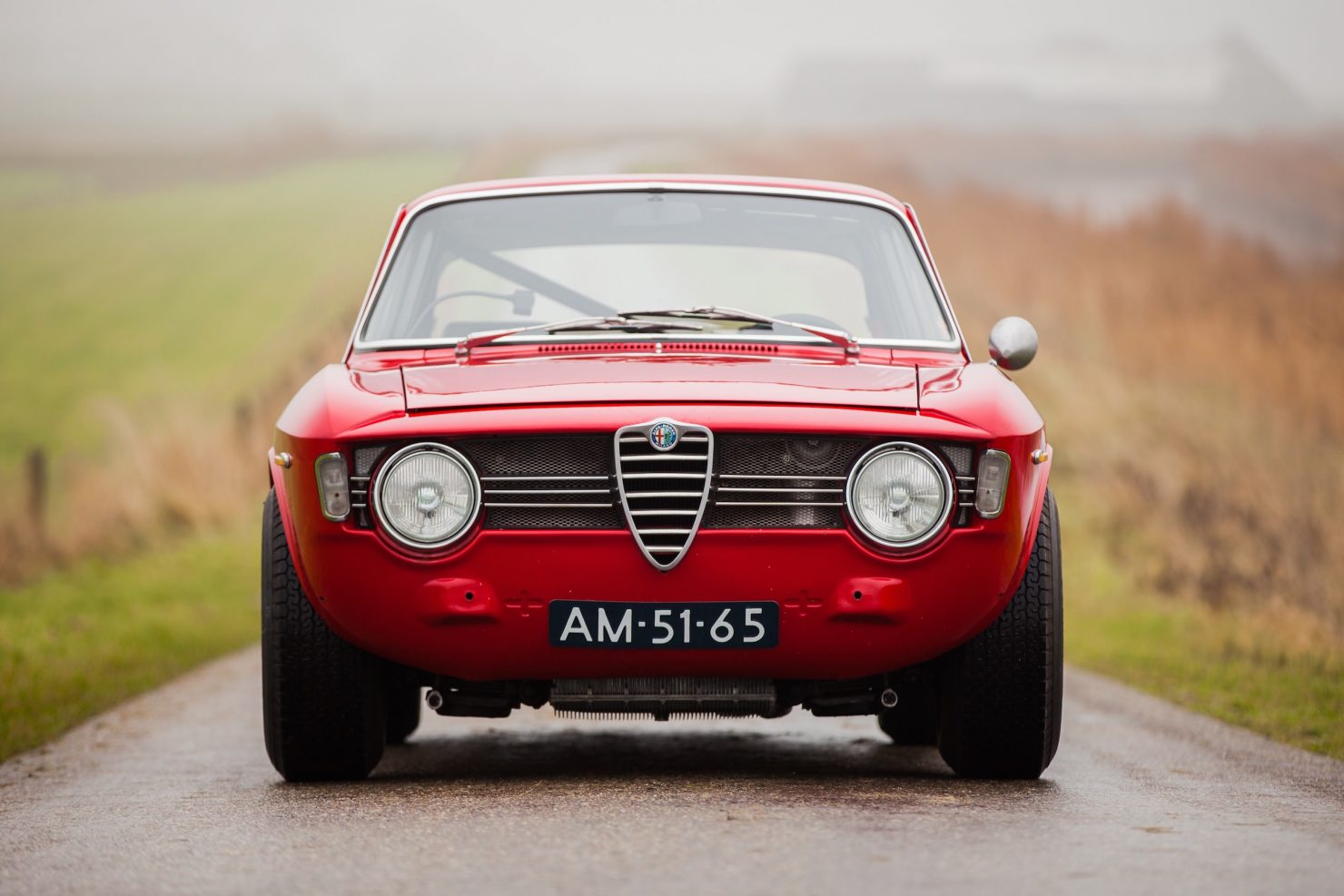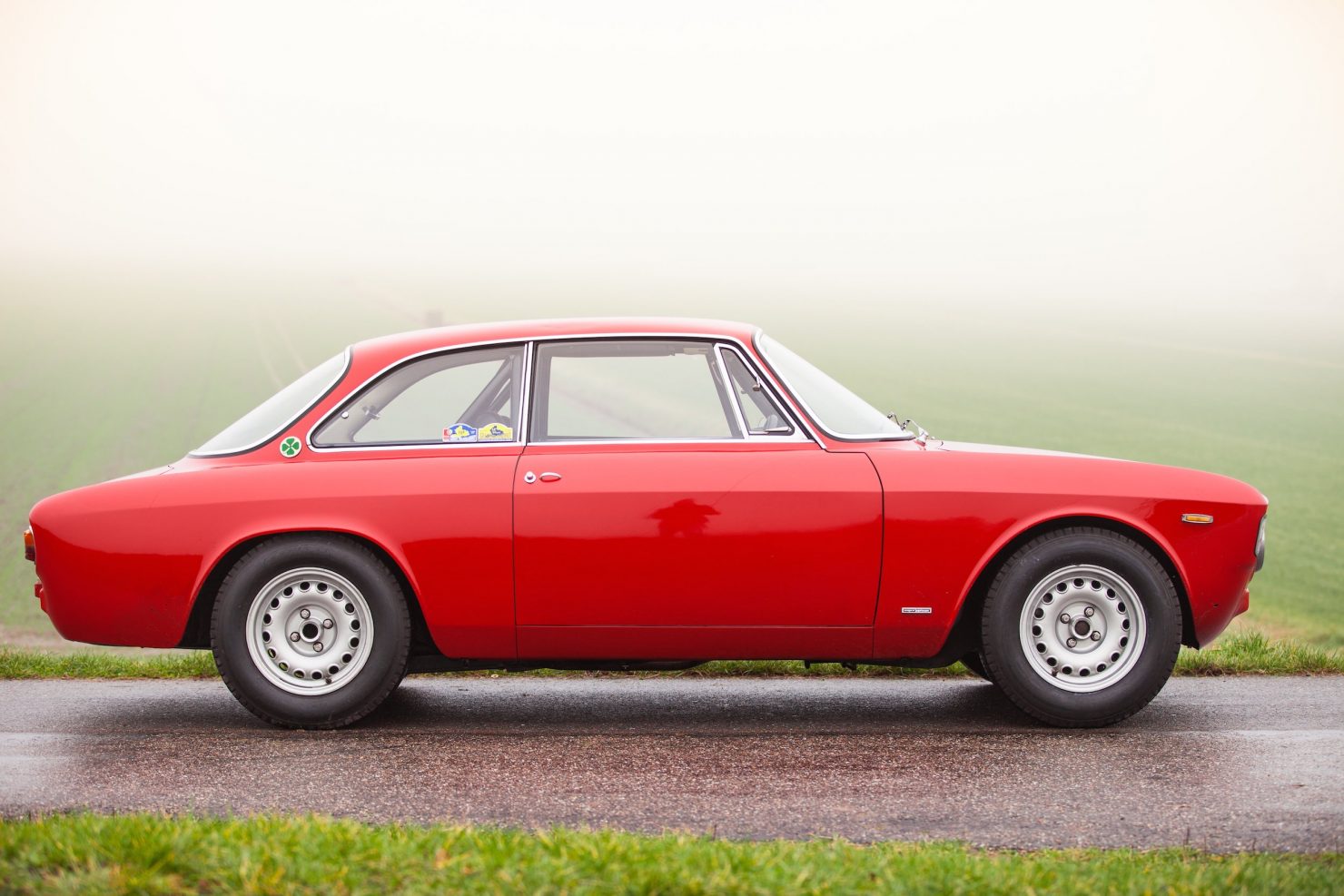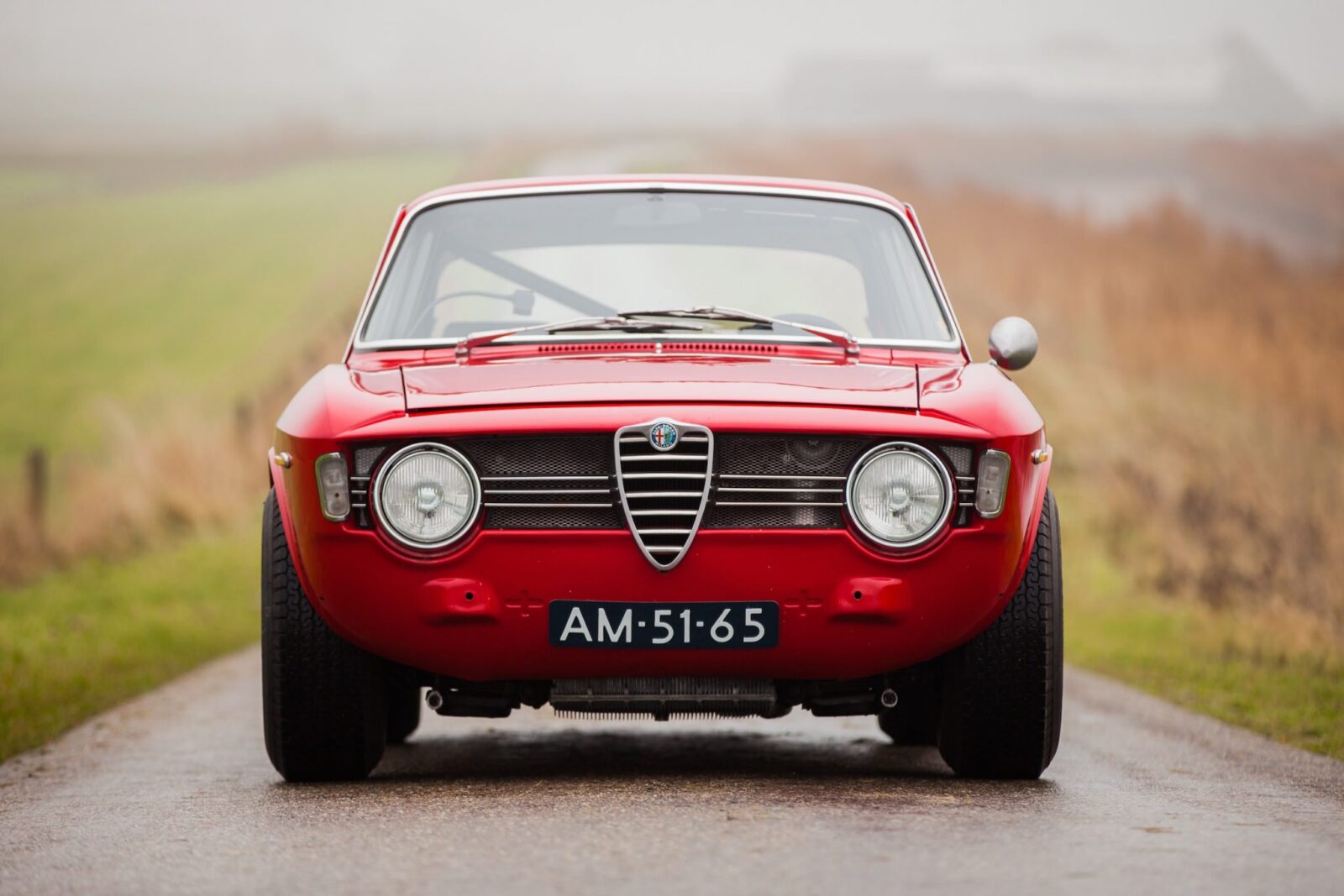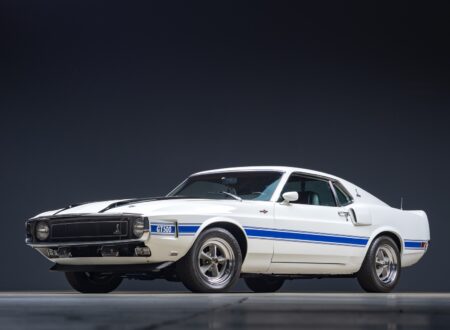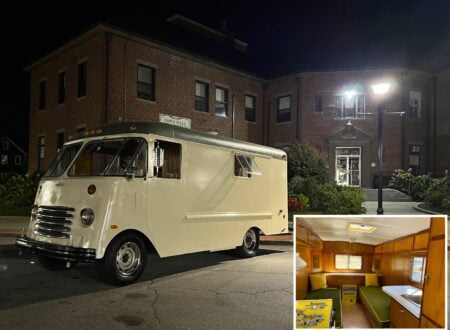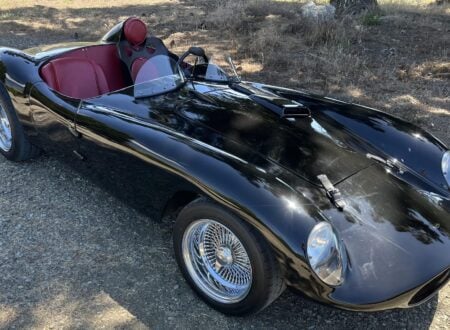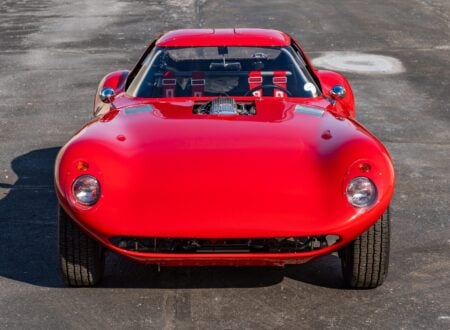Among the Alfa Romeo cognoscenti there are few cars as sacred as the Giorgetto Giugiaro designed “step nose” 105 series coupes of the mid-1960s. They get their nickname from the 1/4 inch gap between the leading edge of the hood and the nose, in Italy they call it the “scalino”, which translates literally to “step”.
A Brief History of the Alfa Romeo Sprint GT Veloce
Giugiaro designed the svelte body and Alfa Romeo created a shortened version of the platform used on the four-door Giulia saloon. It was fitted with the legendary “Bialbero” Alfa Romeo Twin Cam engine, an all-aluminum alloy unit with double overhead cams, a cross-flow head, and two valves per cylinder. Over the course of its remarkably long 1954 to 1994 service life, the Bialbero would be fitted to a huge variety of Alfa Romeo vehicles, its size would range from 896cc through to 2.0 litres, and its horsepower figures would range from 52 to over 220 depending on configuration.
1965 would see the introduction of the Alfa Romeo Sprint GT Veloce, an incremental upgrade over the Alfa Romeo Sprint GT that first hit showrooms in 1963. In Italian the word “veloce” means “speed”, it was chosen as the model suffix as a hat tip to the upgraded Twin Cam Bialbero, which now produced a little more power and a lot more torque.
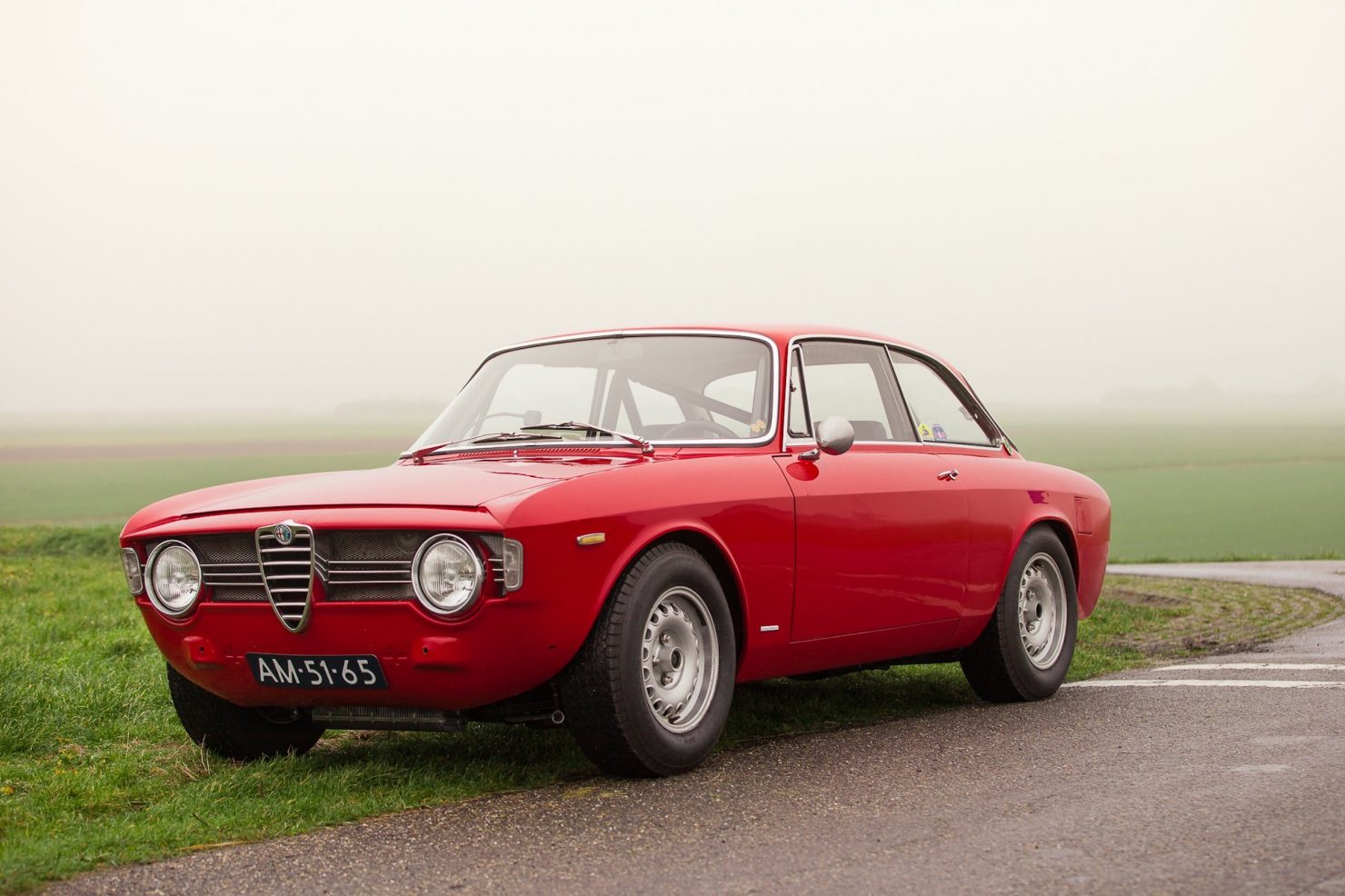
A 5-speed manual gearbox came as standard, sending power back to a a beam axle with coil springs, and a limited slip rear differential was (and still is) a popular upgrade. Front suspension is independent with coil springs and there are disc brakes on all four wheels – giving the 105 series cars solid stopping power by 1960s standards.
In 1967 the Sprint GT Veloce was replaced with the 1750 GT Veloce, the new model had a Twin Cam that was upgraded to 1779cc, and produced 120 hp up from 108 hp on its predecessor. Perhaps the most obvious design changes were the switch to four headlights from the original two, and the loss of the step nose front end – a design feature that became remarkably popular despite its unusual nature.
The Upgraded Alfa Romeo Sprint GT Veloce Shown Here
The concept of taking classic cars and sympathetically upgrading them to significantly improve performance isn’t new, but the work of companies like Singer Vehicle Design have certainly brought it into the mainstream.
The Alfa you see here was built by the specialists at Blankemeijer by a Dutch classic rally enthusiast who wanted a bespoke and highly competitive road rally car. A corrosion-free ex-Arizona ’67 Guilia Sprint GT Veloce was sourced by the team at Blankemeijer – and the work began.
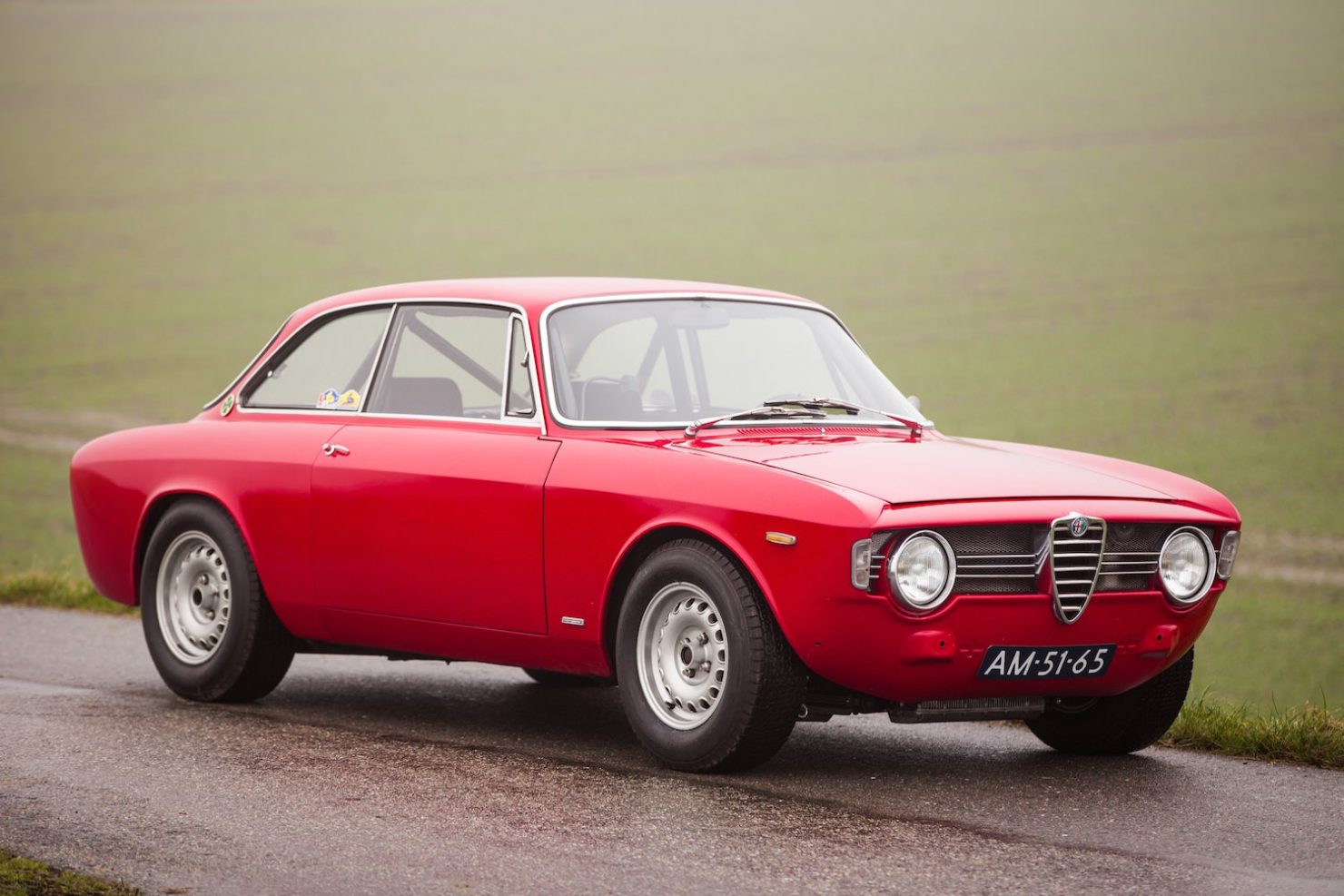
The donor car was taken down to a bare metal shell, some GTA body modifications were made and it was then repainted in Alfa Rosso 501. A fast-road 2 litre Twin Cam engine was built by the team at Van Giersbergen and now produces 160 bhp and 154 lbf.ft of torque – a huge step up from the factory original.
Power was increased thanks to the use of 84 mm Cosworth pistons & liners, a flowed cylinder head with new valves and guides, optimized valve shape with sharpened and shortened guides, a 3 angle valve job, Catcam Camshafts, a hardened crankshaft, a 123-tune/ programable electrical ignition, twin Dellorto DHLA 40 carburetors, a Pipercross air-intake system, a full stainless header and exhaust system, and a high capacity radiator to keep it all running cool.
This engine was mated to a new gearbox with a hydraulic clutch, which was paired with a limited slip differential, and the suspension was rebuilt with Alfaholics Fast Road springs, Bilstein dampers, an upgraded sway bar, GTA-type adjustable top suspension arms, and a set of Alfaholics 15×7 Superleggera Veloce GTA wheels.
The completed car is one of the most fun-looking Alfas we’ve seen in quite some time, and it’s being offered for sale at a price that’s less than the cost of buying a car and getting all the work done yourself. If you’d like to read more about it or enquire into buying it you can click here to visit its listing on Image Street Classics.
